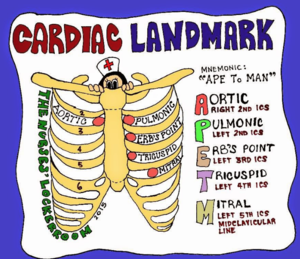Post-op
Resumen del Recurso
Página 1
Nursing diagnosis statements
Made up of Nursing diagnosis 'Related to' factor Evidence for this E.g. Risk of dehydration as related to lack of fluid intake, evidenced by 500 ml intake only in last 24 hours according to FBC.
Página 2
Post-op obs
Following discharge from PACU to the ward, the ward nurse will perform a primary ABCDEFGHI assessment, as well as head to toe. Observations (vital signs) will be recorded also, according to hospital policy/ surgeon guidelines Generally (if a patient is stable these are): Every 15 minutes for the first hour Every 30 minutes for the next two hours and then once an hour for the subsequent four hours
Página 3
Surgeon's post operative orders
These guide the nurse in the post-operative care of the patient activity level diet medications including antibiotics frequency of obs any IVFs that need administering laboratory tests to be conducted Most institutions require a re-order since the person's condition has changed post-surgery
Página 4
Nursing care of common post-op complications
CARDIOVASCULAR Shock - provide emergency assistance as required. Haemorrhage An excessive loss of blood. Nursing care: Applying one or more gauze pads and a firm pressure dressing to the area Applying pressure with gloved hands Preparing person and their family for emergency surgery DVT Formation of a thrombus in association with inflammation in deep veins Most common in lower extremities of post-op patient Common assessment findings in those with DVT: Pain/cramping in the involved calf or thigh Redness, tenderness, warmth, discolouration of the skin and oedema of the entire extremity may occur with a slightly elevated temp May have positive Homan's sign Pain in the calf on dorsiflexion of the foot Suspected DVT can be confirmed by duplex doppler scans however some can be asymptomatic Nursing care: Administer anticoagulants as charted Monitor path results for clotting times Compression stockings or devices to stimulate venous returns Educate the patient to not massage or rub affected area Record bilateral calf/thigh circumference every shift Neurovasc obs for affected limb each shift RESPIRATORY Pneumonia inflammation of the lung tissue Caused by microbial infection or foreign substance that leads to an infection. Nursing care: Sputum culture collection Elevate head of the bed Encourage turning, coughing and deep breathing every two hours Assist with incentive spirometry & neb treatments as ordered Ambulate the person as is permitted and prescribed Administer oxygen as ordered Maintain hydration to help with expectoration Administer medication as ordered Prevent spread of infection by teaching proper disposal of tissues Atelectasis Collapsed lung/incomplete expansion Results in inadequate ventilation and retention of secretions Assessment findings: Dyspnoea hypoxia diminished breath sounds over affected area anxiety/restlessness crackles cyanosis Nursing care: administer oxygen as prescribed elevate bed head encourage coughing deep breathing and turning every two hours ambulation hydration analgesia WOUND COMPLICATIONS Wound healing intention Primary intention uncomplicated wounds that sustain little tissue loss. The edges are well-approximated with stitches or staples. Heals quickly with little scarring Secondary intention Large, gaping and irregular. Tissue loss stops wound edges from approximating Takes longer to heal, more infection prone and larger scarring. Tertiary intention If lots of time passes before a wound is sutured, tertiary intention will take place. The wound edges will not have taken place and the scar will be large. This can also occur if stitches are not well approximated or burst/ wound becomes dehisced.
Página 5
Wound healing
Stages Stage 1 From surgery to day 2 Inflammatory process prepares tissue for healing. Blood vessels constrict - clotting occurs Plasma, WBCs and fibroplastin arrive at the wound site. Mild temp ^ is normal Stage 2 Day 3 - day 14 Fewer WBCs Collagen tissue forms in the wound Granulation tissues are established - red with a rich blood supply.
Wound exudate
Serous drainage Contains mostly the clear serous portion of the blood. Appears clear or slightly yellow and thin in consistency. Sanguineous drainage combination of serum and RBCs and has a thick, reddish appearance. Most common drainage from non-complicated wound. Purulent drainage composed of WBCs, tissue debris and bacteria. Result of infection Thicker constency Various colours -> specific to organism Unpleasant odour
Other wound complications
Dehiscence is the separation of the layers in the incisional wound. May require resuturing if deemed necessary. Evisceration Protusion of bodily organs from the wound dehiscence.
Página 6
¿Quieres crear tus propios Apuntes gratis con GoConqr? Más información.

